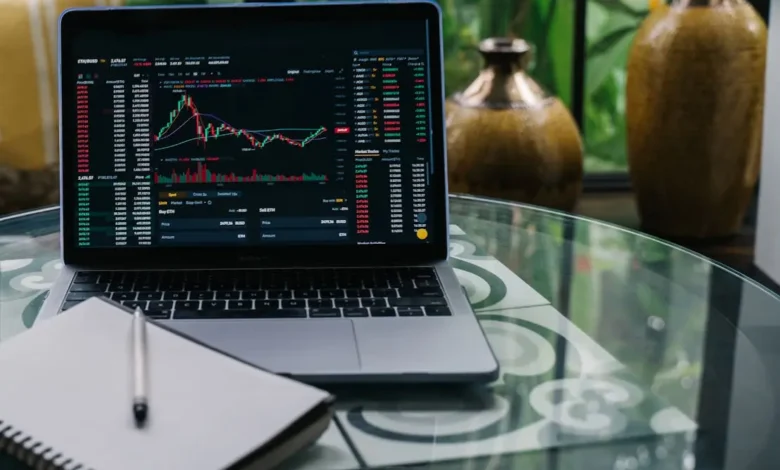
Traders navigate a volatile world where high risks and great profits coexist. To consistently strike a balance in favor of the trader, one must undergo a challenging path from being a beginner to becoming a seasoned professional. You can’t just download an app, copy someone else’s strategy, enable automated trading, and expect to watch your investment yield profits. It’s far more intricate than that. So, how do you master the art of trading? Let’s dive deeper.
The Secrets to a Trader’s Success: 5 Key Steps
Financial markets are unpredictable—there are no guarantees, no one-size-fits-all solutions, and certainly no foolproof formulas. Each of the top traders may use different strategies, tools, and methods. However, all successful traders share several key traits and approaches that set them apart. Let’s explore the five critical steps to becoming a trading expert.
1. Start by Learning: Build a Strong Foundation
The road to success in trading starts with deep learning. The financial markets are complex, and without understanding how they function, it’s impossible to make informed decisions. Begin by studying the basics of market dynamics, asset classes (stocks, forex, commodities, etc.), and how different economic factors influence price movements. You can utilize platforms like MobileTrader or MetaTrader to access tutorials, guides, and virtual trading environments that mimic real-market scenarios.
But don’t stop there. Mastery in trading requires lifelong learning. Markets evolve, new financial instruments are introduced, and regulations change. Regularly updating your knowledge allows you to stay ahead of the curve, enabling you to spot opportunities others might miss. Consider enrolling in courses on technical and fundamental analysis, risk management, and the psychology of trading, or attend webinars from reputable financial institutions.
Pro Tip: Learning doesn’t have to be limited to theory. Engage in simulated trading using demo accounts. These tools offer you the opportunity to practice in real-time environments without risking actual money.
2. Make Calm Your Habit: Mastering Emotions
In the high-stakes world of trading, emotional control is as important as technical skills. Markets can be wild: one day, you might close multiple successful trades, and the next day, you might face unexpected losses. The ability to remain calm, composed, and disciplined through these ups and downs is a hallmark of professional traders.
One of the most common pitfalls among traders especially beginners is letting emotions drive decisions. For example, a sudden market dip might trigger panic selling, leading to unnecessary losses. On the other hand, greed might push traders to hold onto winning trades for too long, only to watch their profits evaporate.
Tip for Success: Develop a mindset where failure is seen as part of the journey. Losses are inevitable, but they provide learning opportunities. Focus on long-term success by following a structured trading plan and avoiding impulsive reactions to market fluctuations.
3. Master Market Analysis: The Backbone of Profitable Trading
No successful trader operates blindly. A solid understanding of market analysis is crucial for making informed decisions. Market analysis allows you to forecast price movements, manage risks, and identify the best times to enter or exit trades. Two main types of analysis are widely used:
- Fundamental Analysis: This approach involves evaluating an asset’s intrinsic value by analyzing economic data, earnings reports, financial statements, and industry trends. Traders using fundamental analysis focus on identifying undervalued or overvalued assets. For example, if a company’s stock price is lower than its projected earnings and growth rate, a fundamental trader might see it as a buying opportunity.
- Technical Analysis: Technical analysis is the study of price charts, patterns, and historical data to predict future price movements. Traders rely on indicators like moving averages, RSI (Relative Strength Index), and MACD (Moving Average Convergence Divergence) to guide their decisions. Recognizing patterns like head-and-shoulders or triangles can help identify profitable entry and exit points.
While both methods are valuable, most successful traders use a combination of the two to create a well-rounded strategy. However, beware of “indicator overload.” There are dozens of indicators, but relying on too many can lead to confusion. Start by mastering a few key indicators that align with your trading style and stick to them.
Example: If you’re a day trader, you might prioritize short-term technical indicators like the 50-day moving average or Bollinger Bands. Long-term investors might lean more on fundamental analysis, focusing on macroeconomic factors and earnings reports.
4. Create a Trading Strategy: Your Roadmap
A common misconception is that you can simply copy someone else’s trading strategy and achieve similar results. While you can certainly learn from others, a truly effective strategy should be customized to your own financial goals, risk tolerance, and time commitment.
When building a trading strategy, take the following into account:
- Timeframe: Are you planning to hold positions for a few hours, days, or weeks? Scalping and day trading require faster decision-making, while swing and positional trading offer more time for reflection.
- Risk Management: Your strategy should include clear risk limits. For example, always know how much of your capital you’re willing to risk per trade (usually between 1-3%). Set stop-loss orders to protect against significant losses.
- Entry and Exit Rules: Define specific conditions for when you will enter and exit trades. This prevents emotional decision-making and ensures you stay disciplined.
Regularly evaluate your strategy’s performance and make adjustments as needed. Market conditions change, and your strategy needs to adapt accordingly.
Pro Tip: Keep a trading journal to document each trade. Record your reasoning behind every trade, the outcome, and what you could have done differently. Over time, this reflection will help you improve your strategy and decision-making process.
5. Choose a Trading Style: Align with Your Personality
While your strategy is personal, your trading style defines how you engage with the market. There are several distinct styles to choose from, and the one you select should match both your personality and lifestyle.
- Scalping: This style focuses on making small profits from numerous trades within very short timeframes. Scalpers might execute dozens of trades in a single day.
- Swing Trading: Swing traders hold positions for a few days to a few weeks, capturing market “swings” that occur during trends.
- Positional Trading: This long-term approach involves holding positions for weeks, months, or even years, typically based on fundamental analysis.
- Day Trading: Day traders close all positions before the end of the trading day, avoiding overnight risks.
The right style should align with your temperament. If you thrive on fast decision-making and constant activity, scalping or day trading might suit you. If you prefer a more measured approach with less stress, swing or positional trading could be a better fit.
Pro Tip: As you choose a style, consider how much time you can dedicate to trading each day and how much stress you’re willing to handle. Consistency in following your chosen style is key to long-term success.
Additional Tips for Trading Success
- Diversify Your Portfolio: Never put all your eggs in one basket. Spread your investments across different asset classes to reduce risk. For example, if you’re trading stocks, consider diversifying across industries or adding commodities and forex to your portfolio.
- Risk-Reward Ratio: Calculate the potential reward compared to the risk for every trade. A risk-reward ratio of 1:2 means you’re risking $1 for every $2 in potential profit. This helps ensure that even a few winning trades can offset multiple losses.
- Stay Updated: Financial markets are heavily influenced by news, economic reports, and geopolitical events. Subscribe to reputable financial news sources and stay updated on market-moving events like central bank decisions or earnings reports.
- Continuous Evaluation: Regularly review your trades and strategies. Learn from both your wins and losses, and adjust your approach based on real-time data and experience.
Becoming a guru at trading isn’t about luck or shortcuts. It’s about mastering the core principles of the markets, continuously learning, managing your emotions, and creating a strategy that works for you. By following these steps and embracing the mindset of a lifelong learner, you’ll significantly enhance your chances of success in the complex world of trading.




